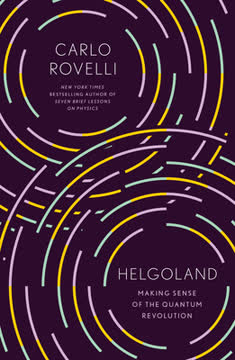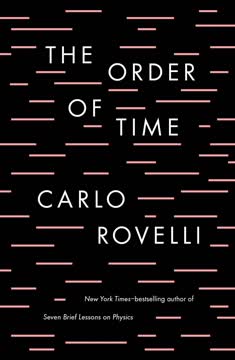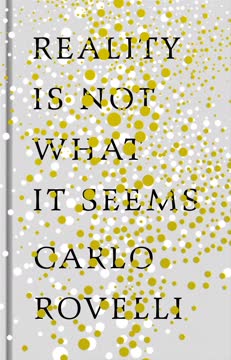Key Takeaways
1. Quantum mechanics challenges our perception of reality
Reality has broken up into a play of mirrors.
Quantum theory shatters classical physics. The discovery of quantum mechanics in the early 20th century fundamentally challenged our understanding of the physical world. It revealed that at the microscopic level, reality behaves in ways that defy our everyday intuitions and experiences.
Key quantum phenomena:
- Superposition: Objects can exist in multiple states simultaneously
- Wave-particle duality: Matter and light exhibit both wave-like and particle-like properties
- Uncertainty principle: Precise measurements of certain paired quantities (e.g., position and momentum) are impossible
- Quantum entanglement: Particles can be instantaneously correlated over vast distances
These concepts force us to reconsider our notions of determinism, locality, and the nature of physical reality itself. The quantum world is probabilistic, interconnected, and often counterintuitive, leading to ongoing debates about its interpretation and implications for our understanding of the universe.
2. The birth of quantum theory: Heisenberg's breakthrough
I felt profoundly shaken. I was so agitated that I could not sleep. I left the house and began walking slowly in the dark. I climbed on a rock overlooking the sea at the tip of the island, and waited for the sun to come up ...
Heisenberg's island revelation. In 1925, a 23-year-old Werner Heisenberg retreated to the remote North Sea island of Helgoland to grapple with the puzzling behavior of atoms. Struggling with hay fever and seeking solitude, he made a breakthrough that would revolutionize physics.
Key aspects of Heisenberg's approach:
- Focused solely on observable quantities, rejecting unobservable electron orbits
- Replaced classical variables with matrices (tables of numbers)
- Introduced the concept of "quantum leaps" between energy states
This radical new approach, later developed into matrix mechanics, provided a mathematical framework for describing atomic phenomena that had baffled physicists. Heisenberg's work, along with contributions from Born, Jordan, and Dirac, laid the foundation for modern quantum theory, leading to a cascade of Nobel Prizes and technological innovations in the following decades.
3. Wave-particle duality and probability in quantum physics
The solidity of the classical vision of the world is nothing other than our own myopia. The certainties of classical physics are just probabilities.
Schrödinger's wave equation. In 1926, Erwin Schrödinger developed an alternative formulation of quantum mechanics based on wave functions. This approach, while mathematically equivalent to Heisenberg's matrix mechanics, provided a more intuitive picture of quantum phenomena.
Key concepts in wave mechanics:
- Quantum states described by wave functions (ψ)
- Probability interpretation: |ψ|² gives the probability density of finding a particle at a given location
- Schrödinger's cat thought experiment: Illustrates the paradoxical nature of quantum superposition
The wave-particle duality of matter and light, central to quantum theory, challenges our classical notions of distinct particles and waves. This probabilistic nature of quantum mechanics, where definite outcomes emerge only upon measurement, remains a source of philosophical debate and scientific inquiry.
4. The relational interpretation of quantum mechanics
The properties of an object are the way in which it acts upon other objects; reality is this web of interactions.
Reality as relationships. The relational interpretation of quantum mechanics, developed in the 1990s, proposes that the properties of quantum objects exist only in relation to other objects. This perspective resolves many paradoxes of quantum theory by abandoning the notion of absolute, observer-independent facts.
Key aspects of the relational interpretation:
- Properties are manifested through interactions, not inherent to objects
- No universal set of facts exists; facts are relative to specific reference frames
- Quantum state (ψ) is always a relative state
This interpretation aligns with the contextuality observed in quantum experiments and offers a way to understand quantum phenomena without resorting to hidden variables or multiple universes. It suggests a reality woven from a web of interactions and perspectives, rather than composed of independent entities with intrinsic properties.
5. Entanglement: The dance of three in quantum reality
Entanglement is not a dance for two partners, it is a dance for three.
Quantum connections. Entanglement, a phenomenon where particles remain correlated over vast distances, is one of the most perplexing aspects of quantum mechanics. It challenges our notions of locality and has been experimentally verified over distances of thousands of kilometers.
Understanding entanglement:
- Correlated properties between distant particles
- No classical explanation (hidden variables) can account for observed correlations
- Requires a third object to manifest and verify correlations
The relational interpretation offers a unique perspective on entanglement, viewing it as a three-way dance involving the entangled particles and the system that observes their correlation. This approach resolves apparent paradoxes without invoking faster-than-light communication or predetermined properties, emphasizing the relational nature of quantum reality.
6. Quantum theory reshapes our understanding of matter and mind
If we think in terms of processes, events, in terms of relative properties, of a world of relations, the hiatus between physical phenomena and mental phenomena is much less dramatic.
Bridging physics and consciousness. Quantum theory's radical reconceptualization of physical reality offers new ways to approach long-standing philosophical problems, including the relationship between mind and matter. While quantum mechanics doesn't directly explain consciousness, it changes the terms of the debate.
Implications for mind-matter relationship:
- Reality as a web of relations rather than independent objects
- Properties existing only through interactions
- Perspective and context fundamental to physical description
This relational view of reality blurs the distinction between mental and physical phenomena, suggesting both can be understood as complex natural processes arising from interactions. While not solving the hard problem of consciousness, quantum theory provides a framework for rethinking the nature of matter, mind, and their relationship.
7. The world as a web of interactions and perspectives
We are such stuff/As dreams are made on, and our little life/Is rounded with a sleep.
A new vision of reality. Quantum theory presents a world far removed from the solid, deterministic universe of classical physics. Instead, it reveals a reality composed of events, interactions, and perspectives, where properties emerge through relationships rather than existing independently.
Key aspects of this quantum worldview:
- No absolute, observer-independent facts
- Reality as a network of relative events and interactions
- Importance of context and perspective in understanding phenomena
This vision of the world, while initially disorienting, offers a profound and beautiful new way of understanding reality. It emphasizes interconnectedness, the role of the observer, and the limitations of our classical intuitions. By embracing this quantum perspective, we gain a deeper appreciation for the subtle, relational nature of the universe and our place within it.
Last updated:
FAQ
What's "Helgoland: Making Sense of the Quantum Revolution" about?
- Exploration of Quantum Theory: The book delves into the development and implications of quantum theory, focusing on its foundational aspects and the revolutionary ideas it introduced.
- Historical Context: It provides a historical narrative, starting with Werner Heisenberg's groundbreaking work on the island of Helgoland, which laid the groundwork for quantum mechanics.
- Philosophical Implications: The book examines the philosophical questions raised by quantum mechanics, such as the nature of reality and the role of the observer.
- Relational Interpretation: Rovelli introduces and advocates for the relational interpretation of quantum mechanics, which suggests that the properties of objects are not absolute but exist only in relation to other objects.
Why should I read "Helgoland: Making Sense of the Quantum Revolution"?
- Understanding Quantum Mechanics: The book offers a clear and accessible explanation of quantum mechanics, making it suitable for readers unfamiliar with the subject.
- Philosophical Insights: It provides deep philosophical insights into the nature of reality, challenging traditional notions of objectivity and determinism.
- Historical Perspective: Readers gain an understanding of the historical development of quantum theory and the key figures involved in its evolution.
- Innovative Ideas: Rovelli presents innovative ideas, such as the relational interpretation, which can change how we perceive the world and our place in it.
What are the key takeaways of "Helgoland: Making Sense of the Quantum Revolution"?
- Quantum Mechanics' Strangeness: Quantum mechanics challenges our classical understanding of reality, introducing concepts like superposition and entanglement.
- Relational Reality: The relational interpretation suggests that properties of objects are not inherent but depend on their interactions with other objects.
- Philosophical Implications: The book explores the philosophical implications of quantum mechanics, questioning the nature of reality and the role of the observer.
- Historical and Scientific Context: It provides a comprehensive overview of the historical and scientific context of quantum theory's development.
What are the best quotes from "Helgoland: Making Sense of the Quantum Revolution" and what do they mean?
- "It’s as if reality … didn’t exist …": This quote reflects the bewilderment and philosophical challenge posed by quantum mechanics, questioning the very nature of reality.
- "The world is a perspectival game, a play of mirrors that exist only as reflections of and in each other.": This highlights the relational interpretation, suggesting that reality is not absolute but depends on perspectives and interactions.
- "The solidity of the classical vision of the world is nothing other than our own myopia.": Rovelli emphasizes that our classical understanding of the world is limited and that quantum mechanics offers a more nuanced view.
- "We are such stuff as dreams are made on, and our little life is rounded with a sleep.": This Shakespearean quote underscores the ephemeral and interconnected nature of reality as seen through the lens of quantum mechanics.
How does Carlo Rovelli explain quantum superposition in "Helgoland"?
- Concept of Superposition: Rovelli explains that quantum superposition allows particles to exist in multiple states simultaneously, a concept that defies classical logic.
- Interference Patterns: He illustrates superposition through interference patterns, where particles like photons exhibit behavior that suggests they take multiple paths at once.
- Observer's Role: The act of observation collapses the superposition, forcing the particle into a single state, highlighting the observer's role in determining reality.
- Philosophical Implications: This concept challenges our understanding of reality, suggesting that what we perceive is not an absolute truth but a result of interactions.
What is the relational interpretation of quantum mechanics as discussed in "Helgoland"?
- Relational Properties: Rovelli's relational interpretation posits that the properties of objects are not absolute but exist only in relation to other objects.
- Observer Independence: It challenges the notion of an objective reality independent of observation, suggesting that reality is a network of interactions.
- Philosophical Shift: This interpretation shifts the philosophical understanding of reality from a substance-based view to one based on relations and interactions.
- Implications for Science: It has profound implications for how we conduct and interpret scientific experiments, emphasizing the role of context and interaction.
How does "Helgoland" address the concept of entanglement?
- Definition of Entanglement: Entanglement is described as a phenomenon where particles remain connected, such that the state of one instantly influences the state of another, regardless of distance.
- Experimental Evidence: Rovelli discusses experiments that demonstrate entanglement, such as those involving photons sent to distant locations yet showing correlated behaviors.
- Challenges Classical Physics: Entanglement defies classical physics' notion of locality and separability, suggesting a deeper interconnectedness in the quantum realm.
- Relational Perspective: From a relational viewpoint, entanglement exemplifies how properties and states are not intrinsic but arise from interactions.
What role does Werner Heisenberg play in "Helgoland"?
- Pioneering Work: Heisenberg is central to the narrative as the pioneer who developed the matrix mechanics formulation of quantum mechanics.
- Helgoland's Significance: His time on the island of Helgoland is portrayed as a pivotal moment where he conceived ideas that would revolutionize physics.
- Philosophical Impact: Heisenberg's work raises philosophical questions about the nature of reality and observation, themes that Rovelli explores throughout the book.
- Legacy in Quantum Theory: Heisenberg's contributions are foundational to the development of quantum mechanics and continue to influence contemporary interpretations.
How does "Helgoland" explore the philosophical implications of quantum mechanics?
- Nature of Reality: The book delves into how quantum mechanics challenges traditional notions of reality, suggesting a world of interactions rather than fixed entities.
- Observer's Role: It examines the role of the observer in determining the state of quantum systems, questioning the objectivity of reality.
- Relational Ontology: Rovelli introduces a relational ontology, where the existence and properties of objects are contingent on their interactions with other objects.
- Broader Implications: These philosophical insights have broader implications for understanding consciousness, knowledge, and the nature of existence.
What historical context does "Helgoland" provide about the development of quantum mechanics?
- Early 20th Century: The book situates the development of quantum mechanics in the early 20th century, a period of significant scientific upheaval.
- Key Figures: It highlights the contributions of key figures like Heisenberg, Bohr, and Schrödinger, who played crucial roles in formulating quantum theory.
- Scientific Revolution: Rovelli portrays quantum mechanics as a scientific revolution that fundamentally altered our understanding of the physical world.
- Cultural and Philosophical Influences: The narrative also touches on the cultural and philosophical influences that shaped the thinking of these pioneering scientists.
How does Carlo Rovelli address the concept of probability in quantum mechanics in "Helgoland"?
- Probabilistic Nature: Rovelli explains that quantum mechanics introduces a probabilistic element to the behavior of particles, contrasting with deterministic classical physics.
- Born's Interpretation: He discusses Max Born's interpretation of the wave function as a tool for calculating probabilities, not certainties.
- Implications for Reality: This probabilistic nature challenges the notion of a predictable, deterministic universe, suggesting a more fluid and uncertain reality.
- Philosophical Questions: The concept of probability raises philosophical questions about causality, free will, and the nature of knowledge.
What is the significance of the title "Helgoland" in Carlo Rovelli's book?
- Historical Reference: The title refers to the island of Helgoland, where Werner Heisenberg developed key ideas that led to the formulation of quantum mechanics.
- Symbolic Meaning: Helgoland symbolizes the isolation and contemplation that often accompany groundbreaking scientific discoveries.
- Pivotal Moment: The island represents a pivotal moment in the history of science, where traditional views of reality were challenged and transformed.
- Personal Journey: For Rovelli, Helgoland also signifies a personal journey into the depths of quantum theory and its philosophical implications.
Review Summary
Helgoland receives mostly positive reviews for its accessible explanation of quantum physics and Rovelli's relational interpretation. Readers appreciate Rovelli's clear writing style and ability to convey complex ideas. Some find the philosophical sections less engaging or feel the book is too brief. Many praise Rovelli's unique perspective and his integration of science with philosophy and Eastern thought. Critics note that the book may be challenging for those without a physics background and that some explanations could be more detailed.
Similar Books
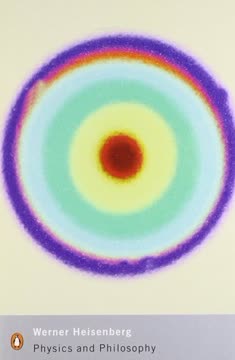







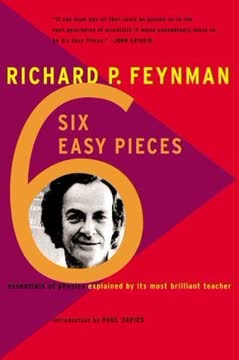
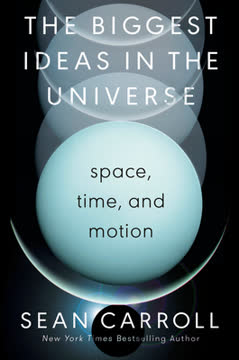
Download PDF
Download EPUB
.epub digital book format is ideal for reading ebooks on phones, tablets, and e-readers.
